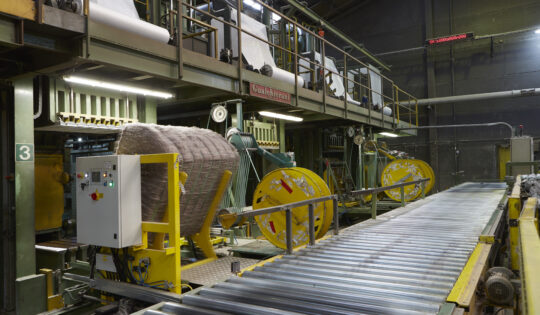Flax for Spinning
Hackled Flax
Product information
- Hackling is the preparation of the flax fibres before the spinning process where the scutched flax is hackled or refined using the variable density of hackling pins.
- Depending on the fineness of the fibre, yarn can be spun from the hackled sliver in a wet spinning process between 8 nm and 100 nm.
- The hackled sliver of 30-35 gr/m is packed fully automatically in bumps of 30 kg and automatically placed on a palette.
Assets of Hackled Flax
The most important phase in the spinning of flax is undoubtedly the hackling process. Irregularities on the sliver during hackling can after all not be fixed anymore during spinning. That is why Procotex, as a pioneer and market leader – our annual capacity is 6 500 ton! – is particularly proud of the fact that our hackled sliver is known worldwide because of its excellent quality.
As a true specialist, Procotex, however, opted for discontinuous hackling (Mackie type). It is, after all, scientifically proven that the conventional hackled flax from this process (Mackie type) has a better quality than the continuous hackling process (Linimpianti process). Thus, Procotex acquired a quasi-monopoly in the finer hackling tow intended for finer hackled sliver for finer spinning numbers (from 32 nm to 100 nm). Even China buys these numbers from Procotex. To secure this unique quality and our competitive advantage in the future, we took over the Lithuanian Linolitas in 2012.
Industrial revolutions and future view
Industry 4.0 is a name given to the current trend of automation and data exchange in manufacturing technologies. It includes cyber-physical systems, the Internet of Things, cloud computing and cognitive computing. Industry 4.0 is commonly referred to as the fourth industrial revolution. In the hackling department, Procotex is applying this technology in its automatic feeding systems of the hackling machines and is monitoring 100% what is happening during the process. We use the latest technology to improve the quality of the hackled sliver by continuously monitoring many sensors which can influence the quality of the sliver. Once monitored, we give automatic impulses to correct the process. By doing so we are less dependent on the human factor and we can guarantee a more even and regular quality of the hackled flax.
 English
English

